Exposing America's History Onstage

With America preparing for its annual 4th of July celebration—albeit in a physically distanced way, perhaps unlike any time before—it must be remembered that the meaning of independence has never been equally applied to all Americans. This point is clearly taking center stage in the national dialogue, especially leading into this year’s Independence Day. What does it mean to be independent? Does our understanding and teaching of America’s history reflect everyone’s reality?
As the country continues to grapple with unacceptable truths, this July 4th we’re reflecting on the ways in which artists have examined and exposed important elements of our country’s history with this look at just some of the many potent plays to appear across our stages. These works explored America’s history in many ways, including through documentary approaches and interpretations using fictionalized characters representing greater truths.
As we stated in our public commitments to change, our mission has always been to reflect the community we serve and to harness the power of art to transform society. This list of projects is just a sample of this work, but as an organization Center Theatre Group has room to grow and deepen this investment. We are committed to producing and amplifying more diverse voices in our mainstage programming, to seeking out, empowering, and creating spaces for those who have historically been marginalized or silenced, and to investing in underserved communities throughout all our programmatic and outreach decisions.
This list is meant to celebrate the work, but also serve as a starting point. Let the great work begin…
Father Comes Home From the Wars: Parts 1, 2 & 3
2016 at the Mark Taper Forum
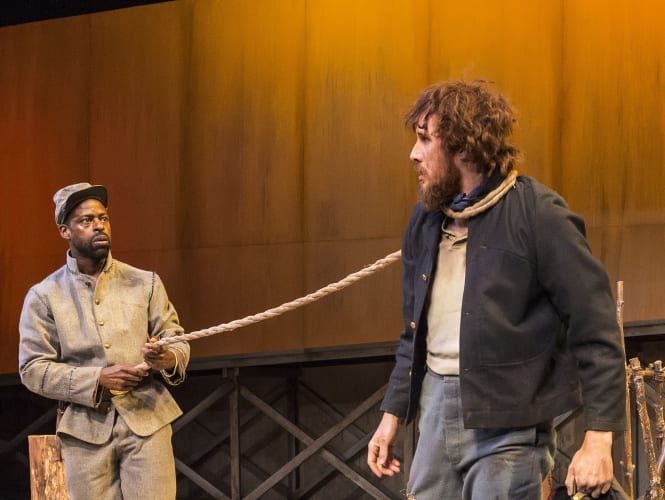
Pulitzer Prize-winning playwright Suzan Lori-Parks’ explosively powerful play, which is set against the backdrop of the Civil War, mixed music, contemporary wit, and epic theatricality to tell a timeless story about the struggle to hold onto who we are and what we love in a country that forces us to fight battles we didn’t choose for ourselves.
Parks explained how she sees the role theatre has in exposing the state of contemporary America when speaking to The Frame during the Taper run: “I think we continue the dialogue. We give people a way to talk about things—[or] issues. I think we give people a way to understand their world. Just like old storytellers. Just like Homer, with The Odyssey. He gave people a way to understand the war. To feel it, you know? A lot of stuff today, they don't want you to feel, they don't want you to think; they just want you to buy something. We want you to feel and think and keep on keepin’ on.”
August Wilson’s The American Century Cycle
25+ years across the Ahmanson, Taper, and Douglas
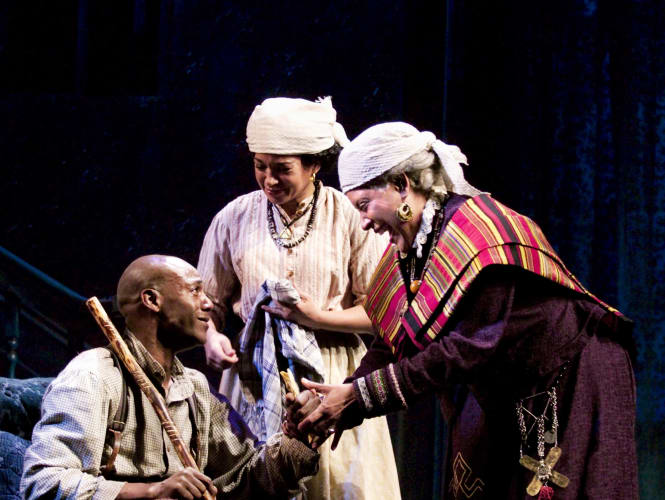
August Wilson was an American playwright who believed in the importance of history to find out who you are and where you’ve been. He said, “It becomes doubly important if someone else has been writing your history.”
Over the course of 25 years, August Wilson completed 10 plays—each set in a different decade of the 20th century—capturing the universal themes of love, honor, duty, and betrayal through the daily lives, creams, triumphs, and tragedies of African Americans, one decade at a time. “Put them all together,” Wilson once said, “and you have a history.”
We’ve produced nine of the 10 plays in the cycle to date.
What the Constitution Means to Me
2020 at the Mark Taper Forum
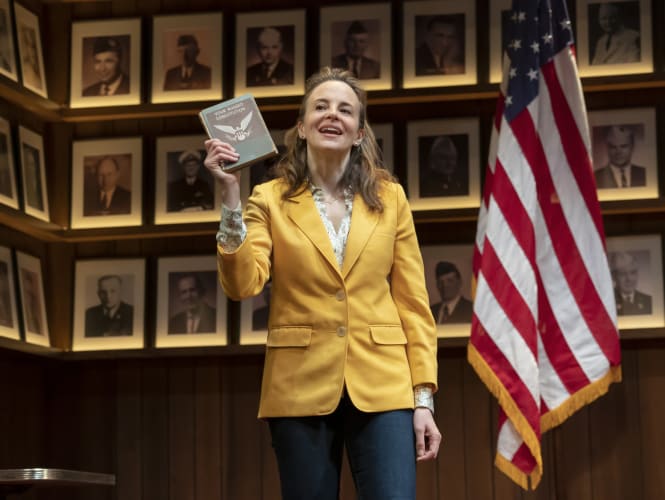
This boundary-breaking play breathes new life into our Constitution and imagines how it will affect the next generation of Americans. Fifteen year old Heidi Schreck—also the playwright—earned her college tuition by winning Constitutional debate competitions across the United States. In this play, she resurrects her teenage self in order to trace the profound relationship between four generations of women and the founding document that shaped their lives.
Chavez Ravine
World premiere in 2003 at the Mark Taper Forum and revived in 2015 at the Kirk Douglas Theatre
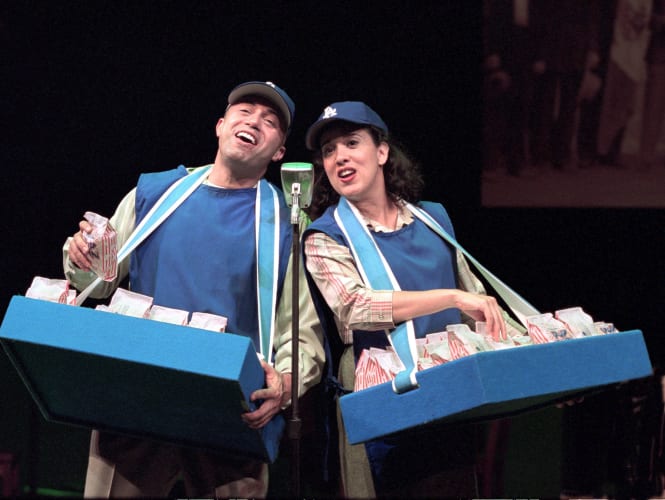
In 1949, long before the Dodgers considered leaving Brooklyn, a hillside neighborhood of a few hundred modest homes became one of the most controversial pieces of land in Los Angeles over a public housing project. Culture Clash’s Richard Montoya, Ric Salinas, and Herbert Siguenza satirically revealed a chain of events that shaped and reshaped the life of a city, the effects of gentrification, and the history of what is now home to Dodger Stadium in Chavez Ravine.
Twilight: Los Angeles, 1992
World premiere in 1993 at the Mark Taper Forum
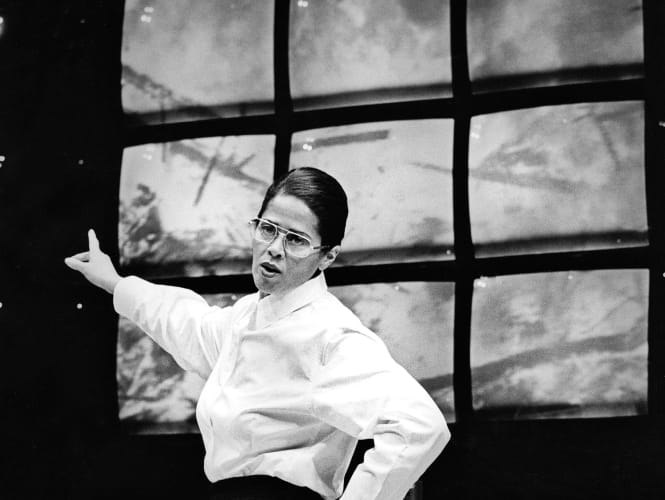
In the immediate wake of the Los Angeles riots and beating of Rodney King, Anna Deavere Smith spent months interviewing more than 175 people from all walks of life to craft Twilight: Los Angeles, 1992, which addressed the conditions and events that led to the uprising.
Smith described her approach to making theatre in the program for Twilight, writing “I am interested in where a person’s unique relationship to the spoken word intersects with character. What fascinates me is not just what a person says, but how they say it. I am also interested in the changing roles of men and women in society, and our current challenge to find new and creative ways to negotiate racial and ethnic difference.”
Zoot Suit
World premiere in 1978 and revival in 2017 at the Mark Taper Forum
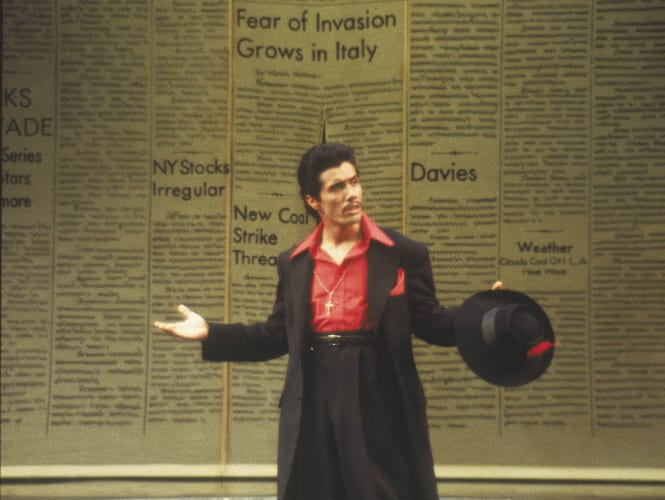
Weaving together fact and fiction from documents, transcripts, letters, and newspaper articles, playwright Luis Valdez portrays the events surrounding the infamous 1942 Sleepy Lagoon murder in Los Angeles in Zoot Suit. It remains an urgent portrayal of the clash between generations in a Chicano family, the rifts between cultures in America, and how racism and injustice can haunt a city and a society.
“I have always believed that the American theatre must be attuned to the realities of our time,” wrote Valdez. “Zoot Suit is a product of that belief and, I hope, proof of the vitality of the relationship between a work of art and the society in which it is produced.”
Latin History for Morons
2019 at the Ahmanson Theatre

John Leguizamo schools America on Cinco de Mayo, and every other aspect of Latin history they’ve misunderstood and forgotten, to create a heartfelt and funny tribute. From a mad recap of the Aztec empire to stories of the unknown Latin patriots who won American independence, Leguizamo breaks down the 3,000 years between the Mayans and Pitbull into 110 irreverent and incisive minutes.
Yellow Face
World premiere in 2007 at the Mark Taper Forum
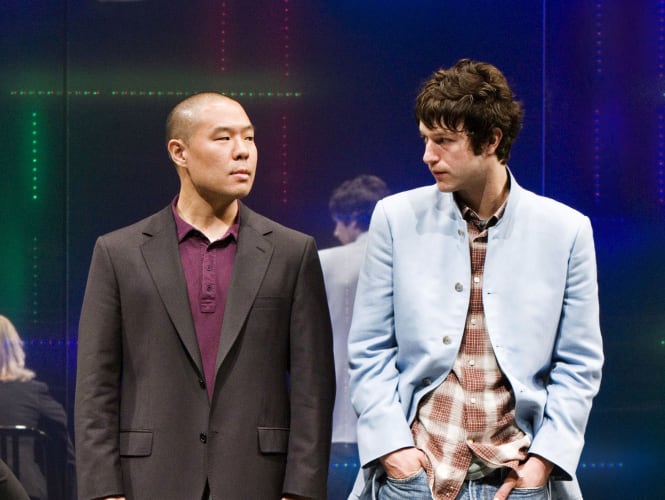
Inspired by the 1990s Broadway controversy over the “yellow face” casting of Welsh actor Jonathan Pryce as a Eurasian pimp in the musical Miss Saigon, Yellow Face by David Henry Hwang spins a comic fantasy in which Asian American playwright DHH pens a play in protest, then unwittingly casts a white actor as the Asian lead in his own play.
Black Elk Speaks
1995 at the Mark Taper Forum
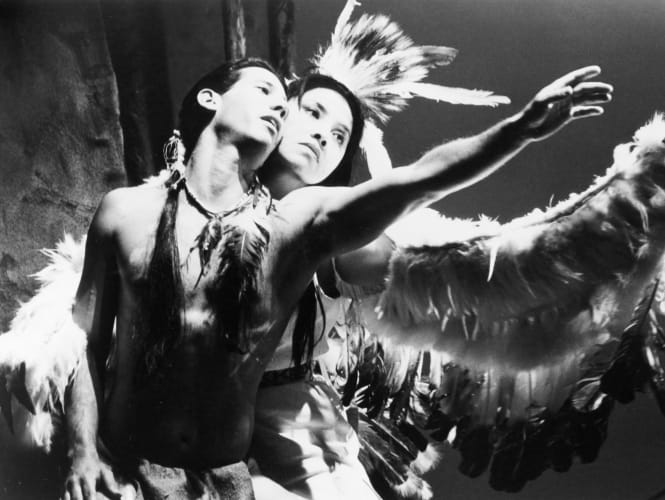
Black Elk lived the experience of the Native American people from the moment before white people entered his world through the end of their independence at the massacre of Wounded Knee. His unique eloquence and that of his cousin Crazy Horse are recognized in this play based on the book by John G. Neihardt and adapted by Christopher Sergel. Using oral storytelling traditions and music, it moves through a vast and rich history.
“The definition of the Indian as far as Hollywood has been concerned is ‘savage.’ This is one of the first pieces that has another view of the Indian,” actor Ned Romero said in an interview with the Los Angeles Times while performing at the Taper. “Maybe it’s time. Black Elk says that what was killed at Wounded Knee (was) not just people but a dream of harmony. His dream is about peace and communication and honesty—from person to person and with nature and the universe.”
Stuff Happens
2005 at the Mark Taper Forum

Stuff Happens by David Hare is about the series of events that led to the war against Iraq, and the parts played by world political leaders, in particular President George W. Bush and his inner circle of foreign policy advisors. From the early search for weapons of mass destruction and the long shadow cast by 9/11, to the drive to remove the tyrannical Saddam Hussein from power, to the thousands of questions relating to oil, terror, Al Qaeda, and more, Stuff Happens explores through public record and through David Hare’s carefully informed imagination what most likely happened behind the closed doors of power.
The Body of Bourne
2001 at the Mark Taper Forum
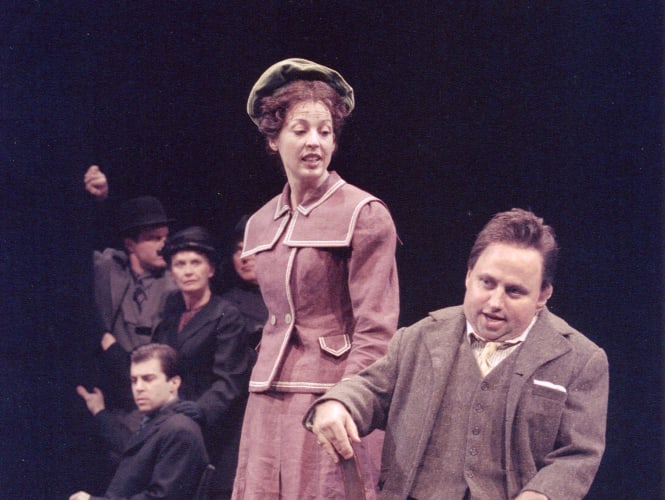
The Body of Bourne by John Belluso traces the brief, but brilliant life of social critic Randolph Bourne, whose significant physical disability gave him a unique perspective on America at the turn of the century. An outspoken critic of World War I, Bourne foresaw further international instability and expressed a longing for a truly cosmopolitan society that would draw its strength from diversity and political pluralism.
The play was developed as part of the Mark Taper Forum’s The Other Voices Project, which was a playwright development program for artists with disabilities in the American theatre.
Bloody Bloody Andrew Jackson
World premiere in 2008 at the Kirk Douglas Theatre
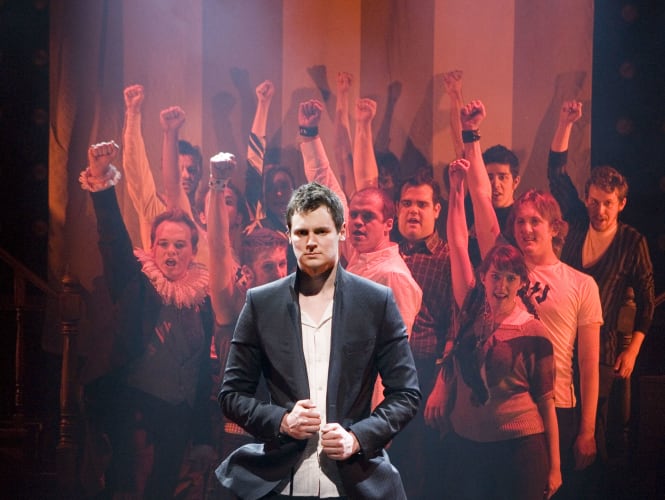
A fast-paced irreverent rock musical about the country we live in and the leaders we choose, Bloody Bloody Andrew Jackson follows America's seventh president from his early days as a child on the wild frontier to his controversial reign in the White House, including his part in the carrying out of the Indian Removal Act of 1830.
“There’s not a show in town that more astutely reflects the state of this nation than Bloody Bloody Andrew Jackson,” critic Ben Brantley wrote in The New York Times once the musical transferred to Broadway. Describing it as “unconditionally (and alarmingly) of the moment,” Brantley said, “the image presented in this shaggy, devastatingly insightful show is likely to remain a true reflection of these United States for many years to come.”
Explore more of our history of works across the Ahmanson, Taper, and Douglas on our Digital Timeline.